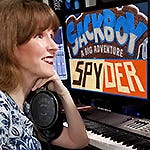
Featured Blog | This community-written post highlights the best of what the game industry has to offer. Read more like it on the Game Developer Blogs or learn how to Submit Your Own Blog Post
Composing Iconic Theme Music for The Dark Eye video game
Composer Winifred Phillips shares her creative process in composing the iconic main theme for one of her most recent projects, The Dark Eye: Book of Heroes. In-depth structural analysis of the theme music composition is included.

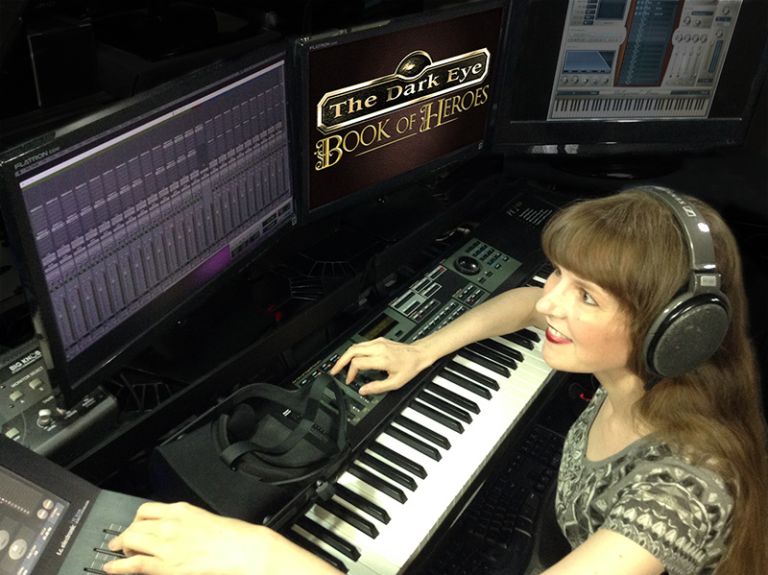
By Winifred Phillips | Contact | Follow
Glad you're here! I'm video game music composer Winifred Phillips. Today I'd like to share some news about one of my latest projects as a video game composer: the newest installment in an internationally-acclaimed fantasy RPG franchise known as The Dark Eye. During our discussion, we'll break down the structure of one of the most important pieces of music I composed for that game.
The latest entry in the award-winning Dark Eye video game franchise will be released this coming Spring 2020 under the title The Dark Eye: Book of Heroes. Before we begin discussing this project and one of the pieces of music I composed for it, let's take a look at the announcement trailer that was recently released by the publisher Ulisses Games. The trailer prominently features a sizable portion of the main theme I composed for the game:
As you can see from the gameplay captured in the trailer, The Dark Eye: Book of Heroes is an isometric real-time roleplaying game. The developers have compared the gameplay of Book of Heroes to top RPG games from the classic era like Baldur's Gate and Neverwinter Nights. The game offers both solo missions and cooperative adventures designed for up to four players. Most importantly, the developers stress in an interview that their game will be faithful to the awesome fantasy world of the renowned RPG franchise - it will be "the most Dark Eye game ever." Composing a main theme is a heavy responsibility, since main theme tracks tend to be regarded as especially important in a composer's body of work. Just this week (Nov. 9th) I was interviewed on the Sound Of Gaming radio show on BBC Radio 3, and the main theme for The Dark Eye: Book of Heroes premiered on this broadcast, spotlighting my work as a game composer. The entire show is available to listen at this link from now until Dec. 8th. A main theme is not only a prominent showcase of a composer's abilities, but also serves a crucial function within the main score of the game. So let's explore that idea further.
Importance of the Main Theme
 In Chapter 9 of my book, A Composer's Guide to Game Music (The MIT Press), I discussed the significance of the main theme within the body of a game's musical score. The main theme often functions as a game's unique musical signature - an iconic representation of the game's core identity. The most effective main themes are able to conjure strong memories of the game long after the player has finished playing. With that in mind, creating a main theme for any game should be approached as a very serious task. Apart from what such a theme might represent for players, the musical content of the theme is likely to become a mechanism that propels the rest of the game's musical score. If we have created a strongly assertive main theme that insistently expresses its identity at the start of the game, then that same melodic content can become a way to reaffirm the core emotional identity of the experience that gamers are having while they're playing. Essentially, the main theme tells the player, 'this is where you are.'
In Chapter 9 of my book, A Composer's Guide to Game Music (The MIT Press), I discussed the significance of the main theme within the body of a game's musical score. The main theme often functions as a game's unique musical signature - an iconic representation of the game's core identity. The most effective main themes are able to conjure strong memories of the game long after the player has finished playing. With that in mind, creating a main theme for any game should be approached as a very serious task. Apart from what such a theme might represent for players, the musical content of the theme is likely to become a mechanism that propels the rest of the game's musical score. If we have created a strongly assertive main theme that insistently expresses its identity at the start of the game, then that same melodic content can become a way to reaffirm the core emotional identity of the experience that gamers are having while they're playing. Essentially, the main theme tells the player, 'this is where you are.'
Let's take a simple example from the world of cinema. If we're watching a Star Wars movie and in the middle of the experience that iconic Star Wars theme music starts playing, we feel a sense of awe and excitement because we're watching Star Wars! The music took a moment to tap us on the shoulder and remind us of the big picture, beyond all the transitory drama and action. The music stepped forward to say, 'hey, you're watching Star Wars! It's fun to watch Star Wars.' That's a big part of the main theme's emotional power. Because of this, motifs from a main theme can (and should) make repeated reappearances.
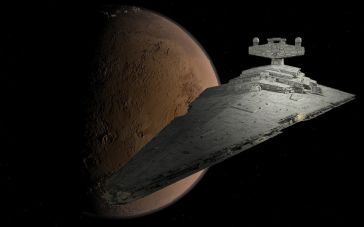 However, recurrences of a main theme can only be effective if the main theme was able to strongly impress itself upon the listener when it was first expressed. The main theme has to be clearly remembered in order to be satisfying when heard again. As an example, in the Star Wars main theme, the central melody consists of a four-bar phrase that is repeated twice, one directly after another, without melodic variation. When heard one after the other, these two identical phrases are the core melodic content of the Star Wars main theme. So, the theme melody itself is built around internal repetition. Going further, the Star Wars main theme composition restates this internally-repeating melody five times over the course of its full length. If you'd like to hear all five repetitions of this internally-repeating theme melody, you can listen at these links (one, two, three, four, five). By the time we're finished listening to the Star Wars main theme, we can instantly recognize that theme melody, and the structure of the theme made absolutely sure that we'd be able to remember it. That's part of why the Star Wars main theme is so effective.
However, recurrences of a main theme can only be effective if the main theme was able to strongly impress itself upon the listener when it was first expressed. The main theme has to be clearly remembered in order to be satisfying when heard again. As an example, in the Star Wars main theme, the central melody consists of a four-bar phrase that is repeated twice, one directly after another, without melodic variation. When heard one after the other, these two identical phrases are the core melodic content of the Star Wars main theme. So, the theme melody itself is built around internal repetition. Going further, the Star Wars main theme composition restates this internally-repeating melody five times over the course of its full length. If you'd like to hear all five repetitions of this internally-repeating theme melody, you can listen at these links (one, two, three, four, five). By the time we're finished listening to the Star Wars main theme, we can instantly recognize that theme melody, and the structure of the theme made absolutely sure that we'd be able to remember it. That's part of why the Star Wars main theme is so effective.
So let's talk about the way in which The Dark Eye Theme took advantage of iterative structure in order to create a memorable melody.
Structure of the Dark Eye Theme
Early on in our discussions of music design for The Dark Eye: Book of Heroes, the development team and I decided that the main theme would receive some extra length, beyond other tracks planned for the game. This would help to reinforce the main theme's importance, and it would also give me the opportunity to more fully express the melodic content. We can first listen to the entire track via the SoundCloud player below:
You'll notice that the main melody is woven carefully throughout the piece. It was important to firmly establish this melody as the main theme of the game, and (as we've discussed) reiteration helps listeners to remember what they hear. With that in mind, the main theme melody of The Dark Eye: Book of Heroes recurs six times over the course of the composition, but the melody is never stated in the same way twice. Instead, it undergoes several variations. Let's break that down.
Main Theme Statement One
The first time we hear the main melody is right from the first notes of the piece. The melody is stated slowly by ethnic woodwinds at first, which are joined by the string section halfway through. This encompasses the first 32 seconds of the track. As our discussion here continues, we'll be taking a tour throughout the main theme music, jumping to specific points in the track so that we can hear how the theme melody is employed within the composition structure. If you'd like to listen to the first appearance of the theme melody, this link will take you to the beginning of the track, where the first statement of the theme takes place.
Main Theme Statement Two
 Once the main theme completes playing for the first time, the brass section takes over with a much brisker, more energetic and staccato restatement of the same melodic theme we previously heard performed languidly by the woodwinds and strings. Clicking here will take you to that exact moment in the composition.
Once the main theme completes playing for the first time, the brass section takes over with a much brisker, more energetic and staccato restatement of the same melodic theme we previously heard performed languidly by the woodwinds and strings. Clicking here will take you to that exact moment in the composition.
After the brass completes stating the theme, the orchestra swings off in a different direction, evoking action and daring adventures. By the time we've listened to a full minute of the track, the composition has broken into the first of two distinct bridge sections. Here's a link that will take you to the first bridge section. Once the bridge strongly asserts the dominant, we're ready to move smoothly into another statement of the theme.
Main Theme Statement Three
We're at 1 minute and 23 seconds now, and the main theme has returned with a more ominous arrangement and a strong pedal point. Here's a link to that moment in the composition. Just like the first statement of the theme, this returning variation is at half-time in comparison with the more assertive treatment by the brass in Statement Two.
 Once the theme is played completely through, the music veers off into another big, rhythmic expression of bravery and determination. This continues until we're 2 minutes and 8 seconds into the composition, when we launch into the second of two bridge sections within the track. We can listen to the second bridge section via this direct link. Once this bridge digs into the dominant once again (at 2 minutes and 28 seconds), we're ready to move naturally into the next statement of the theme.
Once the theme is played completely through, the music veers off into another big, rhythmic expression of bravery and determination. This continues until we're 2 minutes and 8 seconds into the composition, when we launch into the second of two bridge sections within the track. We can listen to the second bridge section via this direct link. Once this bridge digs into the dominant once again (at 2 minutes and 28 seconds), we're ready to move naturally into the next statement of the theme.
Main Theme Statement Four
This is the biggest, most heroic version of our main theme melody, carried by the brass while the string section performs high-energy ostinatos. Listen to this section of the track here. The fourth iteration of the theme completes itself at 2 minutes and 48 seconds, after which we're carried into a transitional section in which the energy gradually settles. The french horns perform a set of dignified calls, to which ethnic woodwinds answer back in a call-and-response structure. Once this has concluded, we move immediately into the next statement of The Dark Eye theme.
Main Theme Statement Five
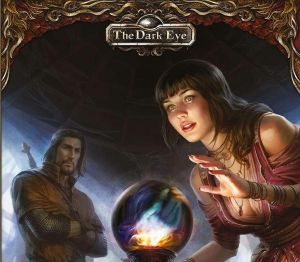 This version of the main theme melody is its most somber and dignified manifestation, with the french horns delivering a stately half-time version of the theme while the violins soar above with a distinct countermelody that rises and falls dramatically. The underlying chord structure here includes a moving bass line and harmonic progression unlike any other iteration of the main theme. Listen here to the fifth statement of The Dark Eye theme.
This version of the main theme melody is its most somber and dignified manifestation, with the french horns delivering a stately half-time version of the theme while the violins soar above with a distinct countermelody that rises and falls dramatically. The underlying chord structure here includes a moving bass line and harmonic progression unlike any other iteration of the main theme. Listen here to the fifth statement of The Dark Eye theme.
Finally, this leads us to the last recurrence of the theme.
Main Theme Statement Six
Occurring in what could be called the composition's outro section, this is the shortest statement of the theme, designed to draw all the loose threads together and provide a strong sense of resolution to the piece. Listen to this section of the track here.
Now that we've examined the underlying structure of the main theme, let's consider how the music relates to the fantasy world for which it was created. In order to do that, we first need to learn more about the world of The Dark Eye. So let's start at the very beginning.
What is The Dark Eye?
In 1983, Ulrich Kiesow founded a company based in Erkrath Germany that specialized in metal figurines for roleplaying games. While his company diversified into a highly successful producer of gaming materials and novels based on licensed properties, Kiesow's passion for RPGs and expert knowledge of roleplaying game systems led him to create his own vast fantasy game world of Aventuria. Distinguished by detailed world-building, exciting adventures and a richly complex rules system, Kiesow's epic RPG was released in 1984 as Das Schwarze Auge (The Dark Eye).
Over 30 years later, The Dark Eye is the most popular European fantasy RPG, with millions of ardent fans around the world. Now in its Fifth edition, The Dark Eye has produced hundreds of great books and novels, as well as countless miniatures, trading card games, board games, and an award-winning series of video games. Since its first game release in 1992, The Dark Eye video game franchise has encompassed thirteen video games for consoles and PCs. That brings us to the imminent release of the latest game in this award-winning series:
The Dark Eye: Book of Heroes
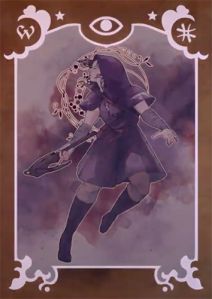 I remember that I was waiting in line at an airport security checkpoint, on my way to the Game Developers Conference in San Francisco, when a message popped into my inbox from a producer at German game publisher EuroVideo. I opened the message on my phone, and started reading. Was I interested in composing all of the music for an upcoming RPG from a world-famous fantasy franchise? Not much more could be revealed at that point, but it was emphasized that the publisher EuroVideo was especially concerned about the epic main theme they wanted. Would I be interested in joining the project as its composer, and creating all the music for the upcoming game?
I remember that I was waiting in line at an airport security checkpoint, on my way to the Game Developers Conference in San Francisco, when a message popped into my inbox from a producer at German game publisher EuroVideo. I opened the message on my phone, and started reading. Was I interested in composing all of the music for an upcoming RPG from a world-famous fantasy franchise? Not much more could be revealed at that point, but it was emphasized that the publisher EuroVideo was especially concerned about the epic main theme they wanted. Would I be interested in joining the project as its composer, and creating all the music for the upcoming game?
Of course, I answered that I was interested, and that I would be free to discuss the project after GDC was over. Days later, after the conference concluded and I was back in my music studio, the e-mails started flying back and forth between myself and EuroVideo, and I learned that the franchise was The Dark Eye. Had I heard of it? Of course I had. While I was only somewhat acquainted with the famous tabletop RPG, I'd heard a lot more about the video game series -- especially the Drakensang, Demonicon and Blackguards games. So now I was contemplating the chance to create music for an expansive fantasy world, lovingly crafted over decades, with an extraordinary depth of lore, history and creative storytelling. Did I want to do it? Absolutely. I signed onto the project immediately.
Now, after an intense music production schedule and a fantastic working relationship with the EuroVideo folks and the team at developers Random Potion, I'm excited that the game has finally been announced to the public and is kindling excitement in the huge fan community for The Dark Eye. I've included some visuals from the game within this article (including the magical female character above, and the beautifully detailed map from the game's user interface as pictured below).
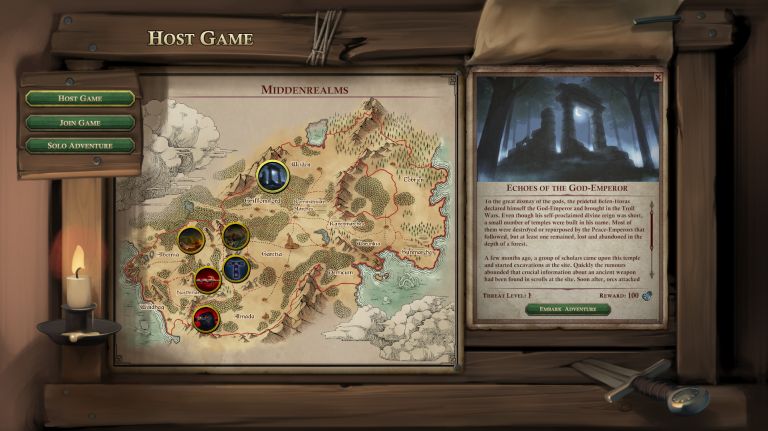
The world of The Dark Eye is described by its creators as "the most thorough fantasy game world ever created." Its society and structure have been called a creative synthesis of "earthly history and historical cultures." The magic and mythical aspects of Aventuria owe a lot to the originating culture from which The Dark Eye sprung, steeped as it is in fairy tales, as well as rich Gothic and Romantic literary traditions. As such, I knew that the music I composed for The Dark Eye would need to feel rooted in the medieval-style world of Aventuria, but with the lighter and more adventurous touches rising from the Romantic and folk traditions prevalent in the fantasy setting. With this in mind, I infused the music I composed for The Dark Eye with folk-inspired instrumentation, while placing a particular emphasis on rustic woodwinds. I hoped that infusing the music with cultural influences from the setting would help to tie the musical score more strongly to the overarching franchise. Such a culturally-driven music composition strategy may be particularly helpful when we're attempting to create an iconic main theme for a richly-detailed fictional world.
Conclusion
A main theme can be a quintessential musical expression of the project to which it is attached. Whether that is a movie like Star Wars, or a video game like The Dark Eye: Book of Heroes, the melody of a main theme must make a strong and lasting impression on listeners. I hope you've enjoyed this discussion of The Dark Eye main theme music, including its underlying structure and construction. I'm very excited to be involved with The Dark Eye franchise, and I'm looking forward to the release of the game in Spring 2020!
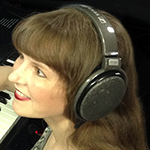 Popular music from composer Winifred Phillips' award-winning Assassin's Creed Liberation score is currently being performed live by a top 80-piece orchestra and choir as part of the Assassin's Creed Symphony World Tour, which kicked off in 2019 with its Paris premiere. As an accomplished video game composer, Phillips is best known for composing music for games in five of the most famous and popular franchises in gaming: Assassin’s Creed, God of War, Total War, The Sims, and LittleBigPlanet. Phillips' other notable projects include music for the triple-A first person shooter Homefront: The Revolution (Deep Silver), and numerous virtual reality games from such accomplished developers as Supermassive Games, High Voltage Software, and Armature Studio. She is the author of the award-winning bestseller A COMPOSER'S GUIDE TO GAME MUSIC, published by the MIT Press. As the foremost authority on music for interactive entertainment, Winifred Phillips has given lectures at the Library of Congress in Washington DC, the Society of Composers and Lyricists, the Game Developers Conference, the Audio Engineering Society, and many more. Phillips’ enthusiastic fans showered her with questions during a Reddit Ask-Me-Anything session that went viral, hit the Reddit front page, received 14.9 thousand upvotes, and became one of the most popular gaming AMAs ever hosted on Reddit.
Popular music from composer Winifred Phillips' award-winning Assassin's Creed Liberation score is currently being performed live by a top 80-piece orchestra and choir as part of the Assassin's Creed Symphony World Tour, which kicked off in 2019 with its Paris premiere. As an accomplished video game composer, Phillips is best known for composing music for games in five of the most famous and popular franchises in gaming: Assassin’s Creed, God of War, Total War, The Sims, and LittleBigPlanet. Phillips' other notable projects include music for the triple-A first person shooter Homefront: The Revolution (Deep Silver), and numerous virtual reality games from such accomplished developers as Supermassive Games, High Voltage Software, and Armature Studio. She is the author of the award-winning bestseller A COMPOSER'S GUIDE TO GAME MUSIC, published by the MIT Press. As the foremost authority on music for interactive entertainment, Winifred Phillips has given lectures at the Library of Congress in Washington DC, the Society of Composers and Lyricists, the Game Developers Conference, the Audio Engineering Society, and many more. Phillips’ enthusiastic fans showered her with questions during a Reddit Ask-Me-Anything session that went viral, hit the Reddit front page, received 14.9 thousand upvotes, and became one of the most popular gaming AMAs ever hosted on Reddit.
Follow her on Twitter @winphillips.
Read more about:
Featured BlogsAbout the Author
You May Also Like

